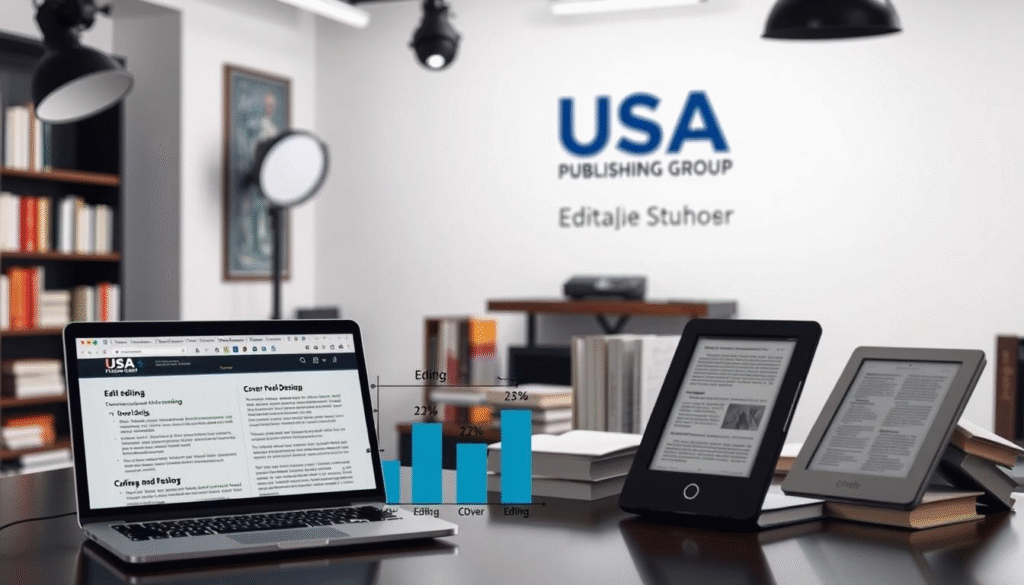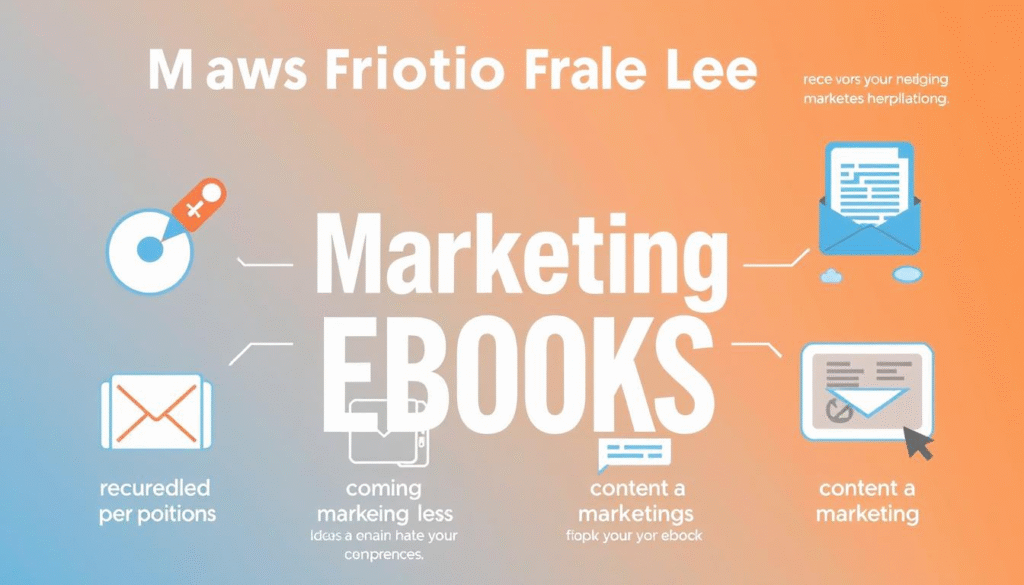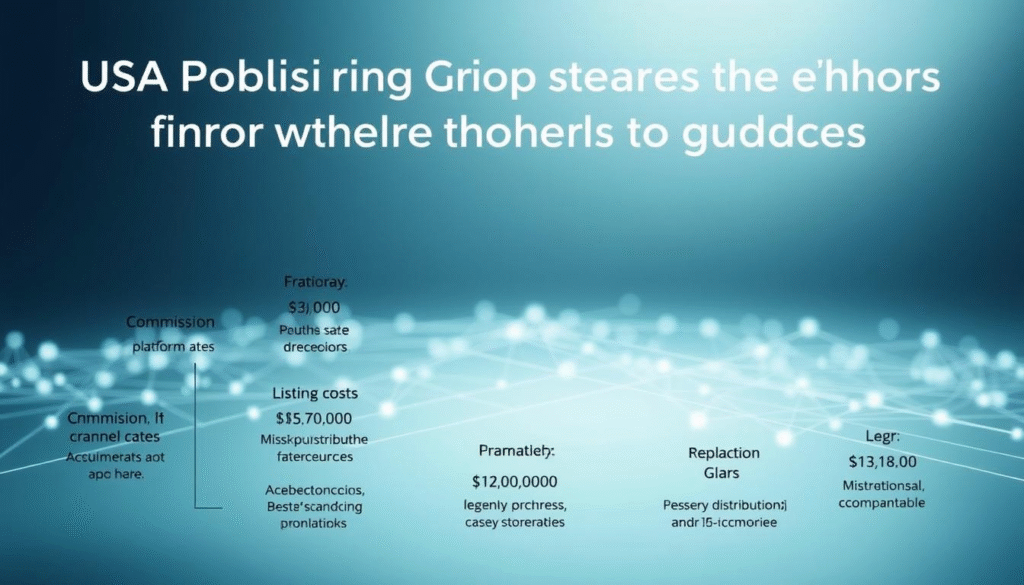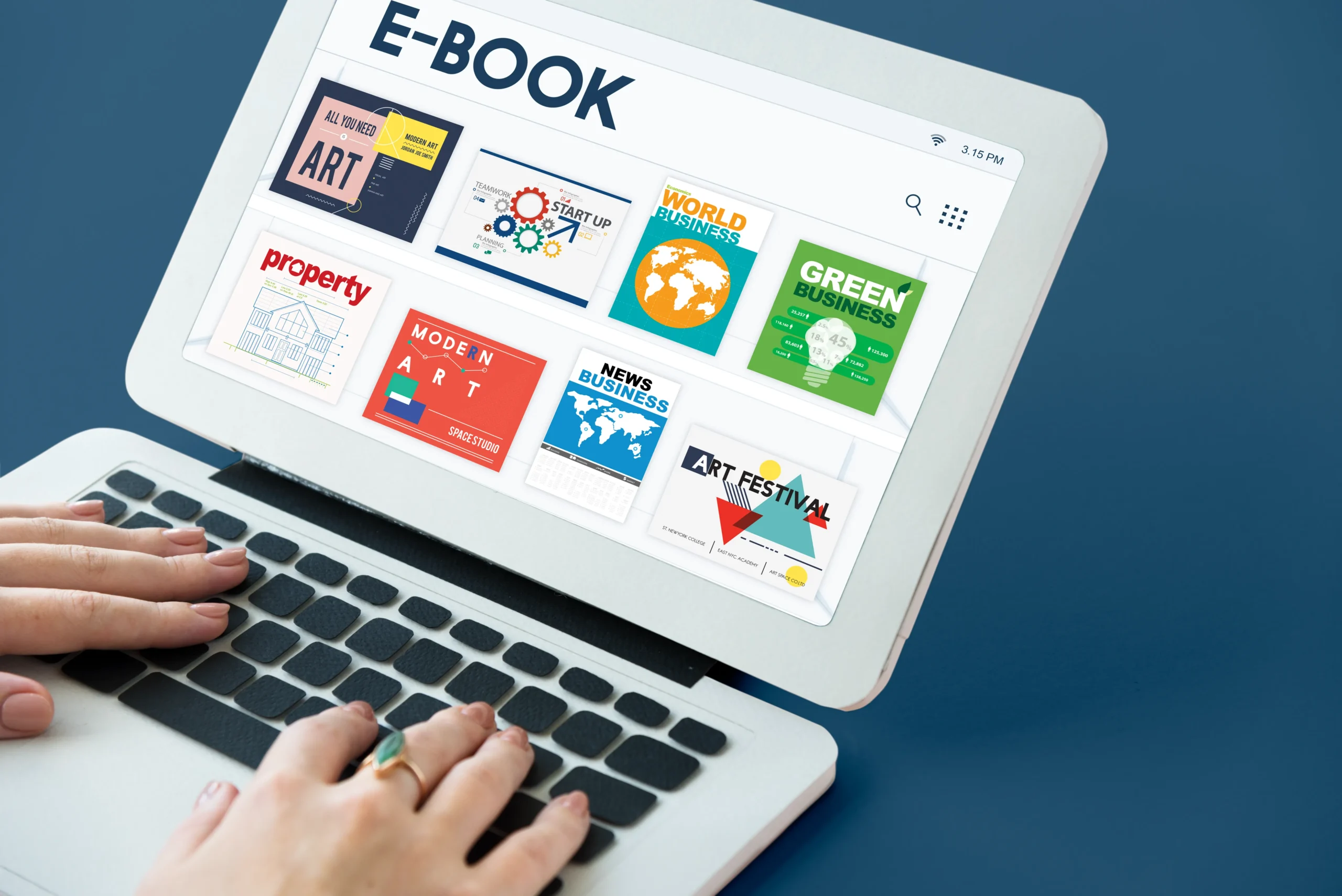Are you considering creating an ebook to offer your audience or as a lead magnet, but wondering if it’s worth the investment? The decision to publish a book involves various factors that need to be weighed against the costs involved.
Authors need to carefully consider the expenses involved in publishing a book, from initial editing to final marketing efforts, to ensure a satisfactory return on their investment. The total cost can vary significantly depending on factors such as book length, complexity, genre, and quality expectations.

For personalized guidance on your publishing project, you can contact USA Publishing Group at support@usapublishinggroup.com or call +16826818050.
Key Takeaways
- Understand the various costs involved in ebook publishing.
- Learn how to budget for your ebook project effectively.
- Discover the factors that affect the total cost of publishing a book.
- Explore the essential and optional investments for enhancing your product’s quality.
- Gain insights into making informed decisions about your publishing budget.
Understanding Ebook Publishing Costs
Understanding the costs associated with ebook publishing is essential for authors to budget effectively. The process involves various expenses that can significantly impact the overall quality and marketability of the final product.
Self-Publishing vs. Traditional Publishing Costs
When considering ebook publishing, authors often debate between self-publishing and traditional publishing routes. Self-publishing allows authors to retain creative control and potentially higher royalties, but it requires them to cover the costs upfront. Traditional publishing, on the other hand, covers the costs but offers lower royalties and less creative control. The cost of self-publishing can vary widely, from $100 to $5,000, depending on the quality of editing, cover design, and marketing efforts.
Average Cost Range for Ebook Publishing
The total cost of publishing an ebook can range from $500 to over $5,000, depending on the services utilized. Here’s a breakdown:
- Basic ebook publishing: $500-$1,000, covering essential editing and simple cover design.
- Mid-range ebook publishing: $1,000-$3,000, including professional editing, custom cover design, and basic marketing efforts.
- Premium ebook publishing: $3,000-$5,000+, encompassing comprehensive editing services, professional cover design, formatting, and extensive marketing campaigns.
Most self-published authors spend between $2,000 and $4,000 to produce a high-quality, market-ready book. Understanding this cost range helps authors set realistic budgets and prioritize their spending.
Editing Costs for Your Ebook

The process of editing an ebook involves several stages, each with its associated costs. Understanding these costs is crucial for authors to budget effectively for their ebook’s production.
Developmental Editing Pricing
Developmental editing is the first stage in the editing process, focusing on the overall structure and content of the book. This stage involves significant rewrites and reorganizations, making it the most costly editing service. Prices for developmental editing can range widely, typically between $0.02 to $0.05 per word, depending on the complexity of the manuscript and the editor’s experience.
Copy Editing Rates
Following developmental editing, copy editing is the next stage, where the editor reviews the manuscript for grammar, syntax, and consistency. The cost for copy editing is generally lower than developmental editing, ranging from $0.01 to $0.03 per word. The exact cost depends on the manuscript’s condition after developmental editing and the level of editing required.
Proofreading Expenses
The final stage is proofreading, which involves checking the manuscript for minor errors in punctuation, spelling, and formatting. Proofreading is typically the least expensive editing service, costing between $0.005 to $0.015 per word. Despite being the last stage, proofreading is crucial for ensuring the book is error-free and polished.
How to Budget for Multiple Editing Rounds
Authors should plan for multiple editing rounds by allocating their budget accordingly. It’s recommended to allocate approximately 60% of the editing budget to developmental editing, 30% to copy editing, and 10% to proofreading. Additionally, building in a 10-15% contingency fund can help manage unexpected editing needs. Many editors offer package discounts of 10-20% for booking multiple editing rounds simultaneously, which can provide significant savings.
By understanding the different stages of editing and their associated costs, authors can better plan their budget and ensure their ebook is professionally edited. Effective budgeting for editing is crucial for producing a high-quality book that appeals to readers.
Cover Design Investment

A well-designed cover can significantly impact your ebook’s visibility in a crowded market. The cover design is a crucial element in capturing the attention of potential readers and conveying the quality of your book.
Professional vs. DIY Cover Design Costs
When it comes to cover design, authors have two primary options: hiring a professional designer or creating the design themselves. According to James Pollard, Founder of TheAdvisorCoach.com, hiring a professional designer may cost more, but it yields a higher quality product. A premium design can cost as much as $500.
DIY cover design tools are available at a lower cost, but the outcome may vary in quality. Professional designers bring experience and expertise, ensuring a cover that meets genre expectations and stands out.
Factors Affecting Cover Design Pricing
Several factors influence cover design pricing:
- Designer experience: Established designers charge premium rates ($1,000+), while newer designers may charge less ($300-$500).
- Complexity of the design concept: Custom illustrations and complex compositions cost more than simple stock photo-based designs.
- Genre expectations: Certain genres require more elaborate designs, affecting pricing.
- Number of revision rounds: Most designers include 2-3 rounds in their base price, with additional fees for extra revisions.
- Multiple format adaptations: Designers who provide various formats (ebook, paperback, hardcover) charge more than those delivering a single format.
- Rush jobs: Expedited services incur a 25-50% premium over standard timelines.
- Rights and usage terms: Exclusive rights cost more than non-exclusive arrangements.
- Geographic location: Designers in major publishing centers charge more than those in other regions.
Understanding these factors can help authors budget accordingly for their ebook cover design, ensuring a balance between cost and quality.
Formatting and Layout Expenses
The cost of formatting an ebook can vary widely, depending on whether authors choose professional services or DIY tools. Proper formatting is essential for a professional finish and to ensure compatibility across different devices.

Professional Formatting Services
Hiring a professional to format an ebook can ensure a high-quality finish. The cost of professional formatting services varies based on the complexity of the book and the formatter’s experience. On average, authors can expect to pay between $200 to $500 for professional formatting.
Professional formatters have the expertise to handle complex layouts, tables, and graphics, ensuring that the ebook looks great on various devices.
DIY Formatting Tools and Costs
For authors who prefer to handle formatting themselves, several DIY tools are available. The costs of these tools range from free to several hundred dollars.
- Atticus: $147 (one-time purchase) – A popular choice for ebook formatting, offering robust features and compatibility with multiple operating systems.
- Vellum: $199.99-$249.99 (one-time purchase) – Considered the gold standard for ebook formatting, but available only for Mac users.
- Adobe InDesign: $19.99/month (subscription-based) – A powerful tool with a steep learning curve, ideal for complex layouts.
- Microsoft Word: $139 (one-time purchase) – A widely used tool that can be effective for basic formatting needs.
- Kindle Create: Free – A basic tool provided by Amazon for formatting ebooks for Kindle devices.
While DIY tools can save money upfront, they require authors to invest time in learning and troubleshooting, which can be a significant hidden cost.
ISBN and Copyright Registration Fees
ISBN and copyright registration are crucial steps in the ebook publishing process, each carrying its own costs. Authors must consider these expenses to ensure their work is properly identified and protected.
ISBN Acquisition Costs
Acquiring an ISBN (International Standard Book Number) is essential for publishing an ebook, as it uniquely identifies your book. The cost of an ISBN can vary; in the United States, it typically ranges from $29.50 to $125, depending on whether you purchase it directly from Bowker or through a retailer like Amazon, which may offer it at no additional cost if you’re publishing through their platform. For more information on obtaining an ISBN, authors can refer to resources that provide detailed guidance on the process.
Copyright Registration Expenses
Copyright registration provides legal protection for your work, and while it’s not mandatory, it’s highly recommended. The cost of registering a copyright in the United States ranges from $45 to $65 for a single work submitted electronically through the U.S. Copyright Office. Registering your copyright provides significant legal benefits, including the ability to sue for statutory damages and attorney’s fees in case of infringement. The registration process typically takes 3-7 months, though expedited processing is available for an additional fee.
Key benefits of copyright registration include enhanced legal protection and the ability to register multiple works under a single registration fee if they are published together. International copyright protection is generally automatic in countries signatory to the Berne Convention, though registering in multiple countries can offer additional protection.
Ebook Publishing Cost Per Word
The per-word pricing model is an essential aspect of ebook publishing that authors must grasp to effectively manage their publishing costs. Understanding the cost per word helps authors make informed decisions about their manuscript’s length and editing requirements.
Industry Standards for Per-Word Pricing
Industry standards for per-word pricing vary based on the type of editing required. For instance, developmental editing, which involves significant restructuring and content development, costs more per word than copy editing or proofreading. On average, editing costs can range from $0.01 to $0.05 per word, depending on the editor’s experience and the complexity of the content. For example, a 120,000-word book may cost double to edit compared to a 60,000-word book.
Factors such as genre, subject matter, and the author’s target audience also influence per-word pricing. Nonfiction and historical fiction books often require more fact-checking, increasing their editing costs. Similarly, books with fewer words, like graphic novels or children’s books, may have higher per-word editing rates due to the same setup time and professional attention required as longer works.
How Word Count Affects Total Publishing Costs
Word count directly impacts almost every aspect of publishing costs. Longer books require more extensive editing, formatting, and design work, increasing overall expenses. Editing costs scale linearly with word count—a 100,000-word book will typically cost 66% more to edit than a 60,000-word book. While formatting costs are less directly tied to word count, they still increase with length due to the need for consistent styling and layout.
Authors can manage costs by targeting appropriate word counts for their genre and avoiding unnecessary length that increases expenses without adding reader value. For instance, romance novels typically range from 50,000-80,000 words, while fantasy novels often exceed 100,000 words. Understanding these genre expectations can help authors plan their manuscript’s length and associated publishing costs more effectively.
Marketing and Promotion Budget
A well-planned marketing and promotion budget is essential for authors to increase their ebook’s visibility and sales. To reach a wide audience, authors must consider various marketing strategies and their associated costs.

Essential Marketing Costs
Essential marketing costs include expenses that are crucial for reaching and engaging with the target audience. These costs can vary but typically encompass online advertising, author platform development, and professional services.
- Amazon ads: minimum $1/day (most likely $100-$1,000 for each campaign)
- Facebook ads: typically $20-$1,000
- Author website: $20-$1,000/month
- Email service for the email list: $100-$1,000
Online advertising on platforms like Amazon and Facebook is crucial for targeting potential readers. Developing a professional author website and maintaining an email list are also essential for long-term success.
Optional Promotional Investments
Optional promotional investments can further enhance an ebook’s visibility and appeal. These include services like BookBub Featured Deals, professional book trailer production, and virtual book tours.
- BookBub Featured Deals: $200-$4,000
- Professional book trailer production: $300-$1,500
- Virtual book tours: $150-$500
Authors can consider BookBub Featured Deals for increased visibility, though they are competitive and represent a significant investment. A professional book trailer can enhance marketing efforts, particularly for fiction books with strong visual appeal.
Distribution Platform Fees
Ebook distribution platform fees play a significant role in determining an author’s overall profit margin. When deciding on a distribution strategy, authors must consider the costs associated with different platforms and their commission structures.
Major Platform Commission Structures
Different ebook distribution platforms have varying commission structures. For instance, Amazon’s Kindle Direct Publishing (KDP) offers a competitive royalty rate, but authors must consider the costs associated with other platforms as well. Popular aggregator services like Draft2Digital, PublishDrive, and Smashwords charge no upfront fees but take a percentage of sales in exchange for wide distribution. The commission rates typically range from 10% to 15% of royalties.
- AWS (Amazon): Offers 70% royalty for books priced between $2.99 and $9.99, with a delivery fee for books over 2.7MB.
- Draft2Digital: Charges 10% to 15% commission on royalties, with no upfront fees.
- Smashwords: Distributes to major retailers, taking a 10% to 15% commission.

Exclusive vs. Wide Distribution Costs
Authors must decide between exclusive distribution to a single platform, like Amazon’s KDP Select, or wide distribution across multiple platforms. Exclusive distribution simplifies marketing efforts but limits audience reach. On the other hand, wide distribution expands potential readership but requires managing multiple platforms and formats.
Amazon’s KDP Select program requires 90-day exclusivity periods but offers benefits including Kindle Unlimited participation, providing additional income through page reads. Wide distribution through multiple platforms typically requires either direct uploading to each retailer or using aggregator services.
“The financial implications of exclusive vs. wide distribution vary by genre, with some genres performing exceptionally well in Kindle Unlimited while others generate more revenue through wide availability.”
Ultimately, the choice between exclusive and wide distribution depends on the author’s genre, marketing strategy, and target audience.
Hidden Costs in Ebook Publishing
Beyond the initial investment, ebook publishing involves several hidden costs that authors must consider to ensure a successful publication process. These costs can significantly impact the overall budget and long-term profitability of the book.
Unexpected Expenses to Plan For
Authors often encounter unexpected expenses during the ebook publishing process. These may include costs associated with website hosting and domain renewal, which can range from $100 to $200 annually. Additionally, maintaining an email list can incur costs between $15 to $100 monthly, depending on the size of the subscriber base. Other unexpected expenses might involve book updates and revisions, which can cost between $200 to $500 per update, and cover refreshes, typically needed every 3-5 years, costing between $300 to $800.
Long-term Maintenance Costs
Long-term maintenance is crucial for the sustained success of an ebook. Ongoing advertising costs can range from $50 to $500 monthly to maintain visibility in competitive marketplaces. Authors may also invest in social media management tools ($10-$50 monthly) to streamline their promotional efforts. Furthermore, accounting software subscriptions ($20-$50 monthly) can simplify tracking publishing income and expenses for tax purposes. Lastly, investing in professional development through courses and conferences ($300-$1,000 annually) helps authors stay current with industry changes and improve their craft.
For more information on ebook publishing and to get in touch with professionals who can assist with the publishing process, please contact us at support@usapublishinggroup.com or call +1-682-681-8050.
Cost-Saving Strategies for Ebook Publishers
Ebook publishers can adopt several cost-saving strategies to maximize their budget. By being mindful of expenses, authors can ensure that their book reaches readers without breaking the bank.
Budget-Friendly Alternatives
One effective way to save on costs is by utilizing content that has already been created. Authors can repurpose previously written material, reducing the need for new research and writing. Additionally, DIY tools can be used for formatting, saving hundreds of dollars. For instance, using DIY formatting tools for straightforward fiction and nonfiction can be a cost-effective alternative to professional services.
Another area where authors can save is on ISBN purchases. Buying in bulk (10 for $295) is more economical than purchasing individual ISBNs ($125 each), making it a worthwhile investment for authors planning multiple books.

When to Invest vs. When to Save
While saving costs is important, there are areas where investment is crucial. For example, cover design is a critical area that directly impacts click-through rates and perceived book quality. Skimping on cover design can reduce sales more than the savings justify. On the other hand, developmental editing can be reduced through thorough self-editing and beta reader feedback.
Marketing is another area where strategic investment yields returns. Authors should focus spending on proven channels for their genre rather than spreading their budget too thinly. Moreover, professional services become more important as the book price increases, as readers paying premium prices expect premium quality.
| Area | Cost-Saving Strategy | Investment Worth Considering |
| Content Creation | Repurpose existing content | High-quality writing |
| Cover Design | Professional design | High-quality visual appeal |
| Editing | Self-editing and beta readers | Professional editing for final draft |
| Marketing | Focus on proven channels | Strategic ad spending |
Ultimately, the decision to invest or save should be guided by the author’s specific goals. Career authors building a long-term business should prioritize quality investments, while those publishing for limited purposes might justifiably economize. By understanding where to save and where to invest, authors can effectively manage their ebook publishing costs and reach their target readers.
Return on Investment Considerations
Evaluating the ROI of your ebook helps authors make informed decisions about future publishing investments. To understand the financial viability of their ebook, authors must consider both the costs incurred and the revenue generated.
Calculating Potential ROI
To calculate the potential ROI, authors need to determine the value of each lead generated by their ebook. This involves working backward through their sales funnel. For instance, if each new paying customer has a lifetime value of $100 and 10% of ebook downloads become paying customers, each ebook lead is worth $10. If the total production cost for the ebook was $3,000, the author would need 300 ebook downloads to break even.
Key factors to consider when calculating ROI include:
- The total production costs of the ebook
- The net profit per book sale
- The conversion rate of ebook downloads to paying customers
- The lifetime value of a customer
Break-Even Analysis for Ebook Publishing
A break-even analysis is crucial for understanding how many copies of the ebook need to be sold to recoup the initial investment. This involves dividing the total production costs by the net profit per book. For example, if the production costs are $3,000 and the net profit per sale is $3.49 (for an ebook priced at $4.99 with a 70% royalty), approximately 860 copies must be sold to break even.
Several factors can influence the break-even point, including the genre of the ebook, marketing efficiency, and whether the ebook is part of a series. Romance and thriller titles tend to reach break-even faster than literary fiction or specialized nonfiction. Effective marketing strategies can also reduce the time to profitability, even if they require a higher initial investment.
Authors should also consider the “long tail” of sales, where ebooks continue to sell over time with minimal additional investment. Series publishing can improve break-even prospects as subsequent books can boost sales of previous titles.
Final Thoughts on Ebook Publishing Investment
As the ebook publishing landscape continues to evolve, authors must consider the value of their investment. Quality eBooks can yield a positive return on investment (ROI) when used as lead magnets, increasing perceived authority and boosting SEO.
The total investment for a professionally produced ebook ranges from $2,000-$5,000, but this can generate returns for years. Authors should prioritize investments in editing and cover design.
For personalized guidance, contact USA Publishing Group at support@usapublishinggroup.com or call +1-682-681-8050.
FAQ
What factors affect the overall ebook publishing cost?
The overall ebook publishing cost is influenced by several factors, including editing, cover design, formatting, and marketing expenses. The complexity of the manuscript, the experience of the service providers, and the chosen distribution channels also play a significant role in determining the total investment.
How much does editing cost for an ebook?
Editing costs vary depending on the type of editing required, the length of the manuscript, and the editor’s experience. Developmental editing, copy editing, and proofreading are the typical editing services needed, with prices ranging from a few hundred to several thousand dollars.
What is the average cost of cover design for an ebook?
The cost of cover design can range from a few hundred to several thousand dollars, depending on the designer’s experience, the complexity of the design, and the number of revisions required. A professional cover design is a crucial element in capturing the target audience.
How does word count affect ebook publishing costs?
The word count of an ebook significantly impacts the cost of editing, formatting, and other services. Generally, the more words in the manuscript, the higher the overall publishing cost. Authors should consider this when budgeting for their ebook.
What are the costs associated with ISBN and copyright registration?
The cost of an ISBN varies depending on the country and the retailer. In the United States, an ISBN costs around $125. Copyright registration expenses also vary, but the basic filing fee is currently $65.
How much should I budget for marketing and promotion?
The marketing budget for an ebook depends on the author’s goals, target audience, and chosen marketing strategies. Essential marketing costs include online advertising, email marketing, and social media promotion, while optional promotional investments may include book signings, webinars, and influencer partnerships.
What are the fees associated with distribution platforms?
Distribution platforms, such as Amazon Kindle Direct Publishing, charge a commission on ebook sales. The commission rates vary depending on the platform and the ebook’s pricing. Authors should factor these fees into their overall publishing cost.
Are there any hidden costs in ebook publishing?
Yes, there are hidden costs in ebook publishing, including unexpected expenses like formatting issues, cover design revisions, or marketing campaign adjustments. Authors should also consider long-term maintenance costs, such as updates and revisions.



